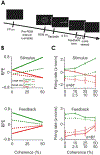Believing in dopamine
- PMID: 31570826
- PMCID: PMC7472313
- DOI: 10.1038/s41583-019-0220-7
Believing in dopamine
Abstract
Midbrain dopamine signals are widely thought to report reward prediction errors that drive learning in the basal ganglia. However, dopamine has also been implicated in various probabilistic computations, such as encoding uncertainty and controlling exploration. Here, we show how these different facets of dopamine signalling can be brought together under a common reinforcement learning framework. The key idea is that multiple sources of uncertainty impinge on reinforcement learning computations: uncertainty about the state of the environment, the parameters of the value function and the optimal action policy. Each of these sources plays a distinct role in the prefrontal cortex-basal ganglia circuit for reinforcement learning and is ultimately reflected in dopamine activity. The view that dopamine plays a central role in the encoding and updating of beliefs brings the classical prediction error theory into alignment with more recent theories of Bayesian reinforcement learning.
Figures




References
-
- Schultz W, Dayan P & Montague PR A neural substrate of prediction and reward. Science 275, 1593–1599 (1997). - PubMed
-
- Courville AC, Daw ND & Touretzky DS Bayesian theories of conditioning in a changing world. Trends Cogn. Sci 10, 294–300 (2006). - PubMed
-
- Gershman SJ, Blei DM & Niv Y Context, learning, and extinction. Psychol. Rev 117, 197–209 (2010). - PubMed
Publication types
MeSH terms
Substances
Grants and funding
LinkOut - more resources
Full Text Sources

